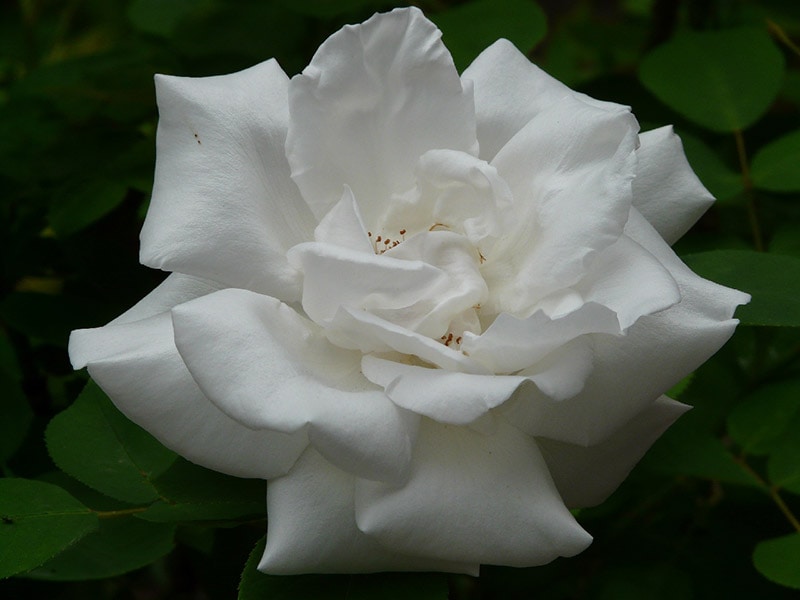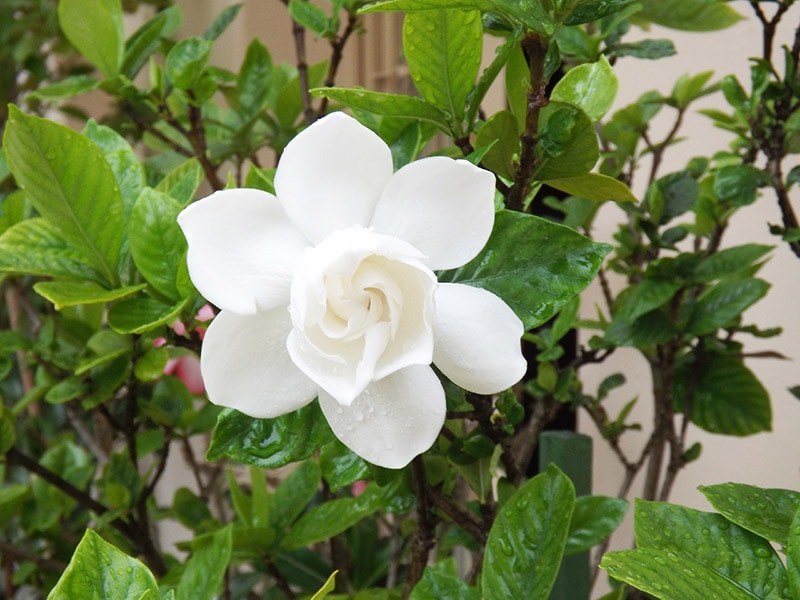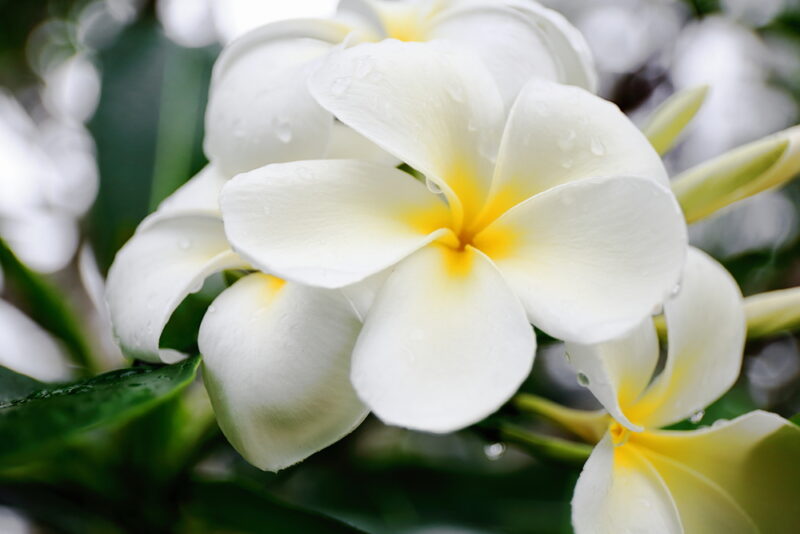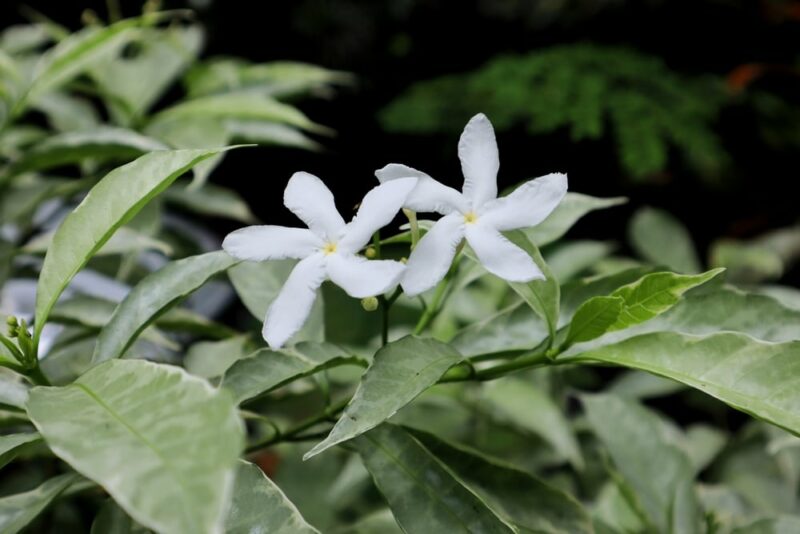Do Gardenias Like Acidic Soil? Facts & FAQs
-

- Last updated:

Gardenias are prized for their fragrant, white blossoms and evergreen foliage, making them a popular choice for yards and gardens. However, in order to thrive, gardenias must be planted in the right soil. So, what does it mean for soil to be acidic, and how do you ensure your gardenias have the ideal pH for their growth? Gardenias prefer soil that is slightly acidic, with a pH level of between 5.5 and 6.5.
To help you out a bit, we’ve put together a quick guide to understanding soil acidity and pH levels for gardenias. We’ll cover the basics of acidic soil and other basics to help you get started with growing and caring for your gardenias.
 What Kind of Soil Do Gardenias Like?
What Kind of Soil Do Gardenias Like?
The level of acidity helps to keep their roots healthy, so they can absorb the nutrients they need. If your soil is too alkaline, or if the pH level is too high or too low, your gardenias won’t be able to absorb the necessary nutrients and won’t thrive. But how do you know if your soil has the right pH level? The best way to check is to use a soil pH testing kit, which you can buy at any garden center.
Once you know the pH level, you can start adjusting it to the optimum range for gardenias. To lower the pH, you can add sphagnum peat moss, sulfur, or pine needles to the soil. To raise the pH, you can add lime. It’s important to note that you may need to adjust the pH level more than once, especially if you’re trying to raise it, as it can take a few weeks for the adjustment to take effect. With the right soil pH, your gardenias will be healthy and happy, and in turn, you’ll be rewarded with a beautiful display of vibrant blooms.

Choosing the Ideal Location for Gardenias
Before you choose a spot to plant your gardenias, you’ll want to make sure the location is suitable for them. In general, gardenias like to have warm temperatures with consistent rainfall throughout the year. They prefer to be sheltered from extreme temperatures or harsh weather conditions and grow best with a minimum of 5 hours of direct sunlight a day. Choose an area with well-drained soil, ideally with sandy or sandy loam soil. Avoid planting gardenias in areas that get too much shade, as they don’t like the soil to be too moist.
Selecting the Right Soil for Gardenias
When you’re choosing soil for your gardenias, it should be rich and light, with a pH level between 5.5 and 6.5. Gardenias are heavy feeders, so you’ll want to regularly feed them with a slow-release fertilizer, especially during the winter months when there’s less natural fertilizer in the soil. You can also add compost to your garden soil once a year to improve the soil’s texture and add in essential nutrients.
Gardenia soil should be slightly moist but not overly wet. The best way to determine if your garden soil is moist enough is by digging your finger into the ground up to your second knuckle. If the soil is moist enough to stick to your finger, it’s moist enough for your gardenias. If the soil is too wet, you can add a layer of mulch to help retain moisture. If the soil is dry and crumbly or too hard to penetrate with your finger, it’s definitely time for a watering session.

Planting Gardenias
When you’re planting gardenias, it’s ideal to plant them in the fall, although you can plant them in the spring as well. Choose a sheltered location, with mild temperatures, and a spot that receives consistent sunlight.
Make sure the soil is sandy and rich in nutrients. As mentioned earlier, gardenias prefer to be sheltered from extreme weather, such as strong winds. So, if you live in an area with strong winds, consider planting them near a wall, structure, or hedge to provide some protection. When you’re planting your gardenias, dig a hole about twice the size of the root ball. This will help the plant establish a good root system and will prevent them from being lifted up out of the ground during strong winds when they’re freshly planted.
Watering Gardenias
While there are a couple of ways you can choose to water your gardenias, it’s important to keep in mind that too much watering can cause root rot. Watering your gardenias by hand (via a pitcher) is the best and perhaps the easiest way to ensure they get just the right amount of water.
Using a drip irrigation system is also a great way to make sure your gardenias get the right amount of water. You can also install a rain sensor to your drip irrigation system, which will automatically turn it on when it begins to rain.

Fertilizing Gardenias
Gardenias tend to only need fertilization about twice a year, once in the spring and again in the fall. You’ll want to choose a fertilizer that is high in nitrogen and phosphate, like 10-10-10. Avoid using a fertilizer that’s high in potash, as gardenias don’t need it. A slow-release fertilizer works best for gardenias. If you choose to fertilize your gardenias with granular fertilizer, be sure to water it into the soil.
Pruning Gardenias
It’s best to prune the stems back to the first lateral branch. This will help spur new growth, which will then flower the following year. If you aren’t worried about affecting the bloom the following year (like if the plant is suffering from a disease), you can prune your gardenias at any time. Just make sure to sterilize your pruning shears between each plant, as gardenias are prone to several different diseases. You’ll want to also sterilize your pruning shears after finishing the entire pruning session.
Common Pests and Diseases of Gardenias
Gardenias are prone to several common pests, including aphids, whiteflies, and mealybugs, as well as a variety of diseases.
Aphids
Aphids are tiny black and white insects that feed on the sap in gardenia plants. Aphids can be difficult to spot, but you can look for wilted or distorted leaves and black spots on your plant. To eradicate aphids from your gardenias, spray the plant with neem oil.

Whiteflies
Whiteflies on gardenias are much larger than aphids and are usually yellow or gray in color. If you see whiteflies on your gardenias, you can spray the plant with neem oil, or insecticidal soap.
Mealybugs
To kill mealybugs, which are small white insects that feed on the root system of the plant, you’ll want to treat the soil with a mealybug killer (you can get this online or at any gardening or home improvement store). Sometimes these pests can lead to other diseases. And to treat these diseases, you’ll want to prune and destroy the infected foliage.
 Wrapping Things Up
Wrapping Things Up
Gardenias are gorgeous and come in many different colors. They’re perfect for adding color to your home or as gifts for loved ones. However, to ensure you have healthy gardenias for many years, make sure you plant them in the right location and soil type. Once you know the pH level and the nutrients your gardenias need, you can help them thrive and take advantage of their beauty by working with their natural growing habits.
If you have questions about the pH levels in your soil, or if you just want to make sure your gardenias are healthy, you can contact your local nursery or garden center. They can help you identify the right type of soil to plant your gardenias in and help you adjust their soil pH level if necessary. With the right care, you can enjoy the beauty and bounty of gardenias for years to come.
Featured Image Credit: JumpStory
Contents
 What Kind of Soil Do Gardenias Like?
What Kind of Soil Do Gardenias Like?